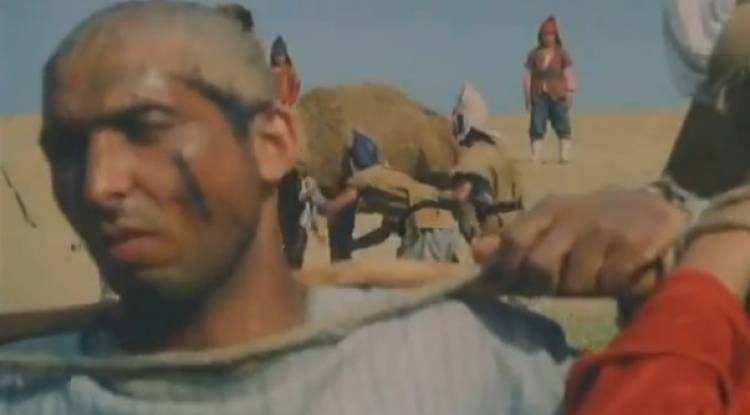Who is called Mankurt?
The hair of the person who wanted to be turned into a 'Mankurt' was shaved, the skin of the camel's neck was stretched over his head, and he was kept under the sun for a few days. When the camel's skin stuck to the skull, the person's hair could no longer grow, and after a while, the hair would grow into the skull and begin to cause great pain to the person.

As a result of this pain, the person who took the name 'Mankurt' could not even recognize his parents and was turned into a slave who did everything he was told without question.
According to the information obtained from old Turkish, Kazakh, and Kyrgyz epics and Central Asian Myths, 'Mankurt' was a very common torture and mind control method among the Central Asian peoples of the period. When they wanted to turn a person into a mankurt: That person's head (hair) would be shaved thoroughly, the skin of the camel's neck would be stretched over his head, and the Mankurt candidate with the camel skin on his head would be left in the hot desert under the sun for a few days.
Mankurts are unthinking slaves in Chinghiz Aitmatov's novel The Day Lasts More Than a Hundred Years. In the figurative sense, the word "mankurt" refers to people who have lost touch with their ethnic homeland, who have forgotten their kinship. In this sense, it has become a term in common parlance.
Thus, under the influence of heat, the camel skin shrinks and sticks tightly to the head. As the camel skin begins to integrate with the scalp, the shaved hair begins to grow again. However, the skin sticks to the head so much that the already hard camel skin hardens due to the heat, and the growing hair cannot pierce the skin and continue to grow. For this reason, hair begins to grow towards the inside of the head rather than towards the outside of the body. The mankurt suffers greatly due to the pressure of the camel skin shrinking from the heat on the skull and the hair growing in the opposite direction inside the head, piercing the skull and moving toward the brain. Unable to bear this pain, the mankurt turns into a puppet after a while. He loses his memory and doesn't even recognize his parents. He becomes unable to use his mind and think. Therefore, it obeys whatever its owner says.
While Kyrgyz writer Cengiz Aytmatov's work "A Day Becomes a Century" was translated into many Western languages and Turkish dialects and became widespread, the concept of "mankurt" was accepted and entered the literature and the themes of "mankurt" and "mankurtization" became widespread. "Mankurtism", with the quote from Aytmatov's "The Book of the Year" by Lackhine in France, has taken its place in the social psychology literature as a term that covers the themes of "changing social identity and alienation from one's roots".
The formation of the word took place by deriving from the root Man or Bun. The word bun means lack of reason. There are also words meaning old age and senility with similar roots in Mongolian and Old Altaic languages. In Tungus and Manchu languages, there is a condition of not being able to use reason, expressed by the word "Mana". The word "Dumbhead" in today's Turkish is derived from the same roots. In terms of meaning, they have the same or similar meanings.
